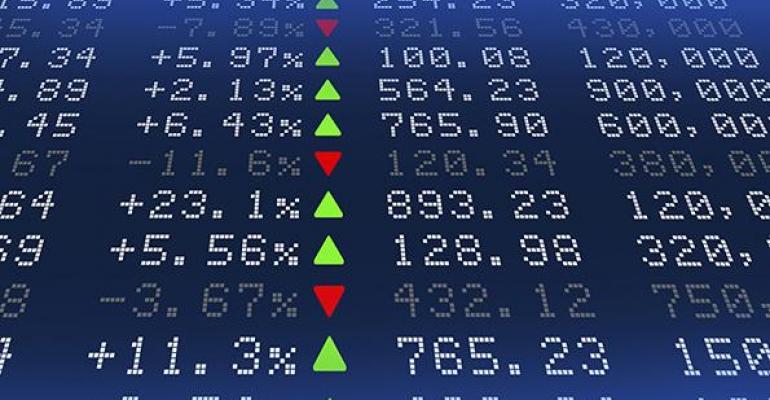By Simon Ballard
(Bloomberg) --Global corporate bonds have performed strongly this year across both primary and secondary markets, but some signs have emerged recently that risk assets could be approaching a turning point. Even if investors favor credit for its incremental yield, they are likely to become more discerning as political risks mount, Bloomberg strategist Simon Ballard writes.
After price appreciation over the past year, U.S. exchange-traded funds that invest in speculative-grade corporate bonds have started heading south this month. The iShares iBoxx dollar high-yield bond ETF has reversed all of its 2017 gains, having slipped from an historic high on Feb. 27. Meanwhile, the equivalent high-grade ETF is also now lower year-to-date, albeit having achieved less prior upside performance and still well off its July 2016 high.

The question now is whether this will prove to be just a short-term correction or the beginning of a more structural shift. Will any correction be the reserve of U.S. markets or hold lead indicator status for global risk?
The case for being invested in credit risk is arguably still strong. With global central bank monetary policy accommodative, even as markets brace for the Federal Reserve to raise interest rates this week, extra yields of about 378 basis points investors can pocket buying high-yield bonds look comparatively good. In Europe, issuers have raised 363 billion euros ($387 billion) in syndicated debt issuance since the beginning of this year and have been able to cut as much as 35 basis points off the advertised yield (between initial price talk and final terms) during marketing. Optimism that fiscal stimulus from the Trump administration will help revive U.S growth persists.
Investment-grade ETFs fell more than their high-yield brethren in the bond sell-off that followed the U.S. election, and have since failed to bounce back. As such, a growing wedge has developed between the two markets as the prospect of rising U.S. interest rates may favor shorter-duration high-yield risk.
But, given the current backdrop of political uncertainty on both sides of the Atlantic and skepticism about whether a growth rebound can last absent stimulus, risk appetite seems to be wavering. It will be further tested if efforts by central banks to quash future inflationary pressure, resulting from loose monetary and fiscal policy, end up choking economic growth.
Notwithstanding the relative duration arguments for and against being invested in high yield and investment-grade assets, the sharp negative price performance of the dollar high-yield corporate bond ETF this month suggests that a more meaningful price correction could be brewing.
Simon Ballard is a credit strategist who writes for Bloomberg. The observations made are his own and are not intended as investment advice.
To contact the reporter on this story: Simon Ballard in London at [email protected] To contact the editors responsible for this story: Tim Barwell at [email protected] ;Samuel Potter at [email protected] Cecile Gutscher, V. Ramakrishnan

